Vatican - Vatican Museums
Brief History of the Vatican Museums
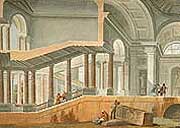
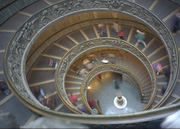
The Vatican Museums originated as a group of sculptures collected by Pope Julius II (1503-1513) and placed in what today is the “Cortile Ottagono” within the museum complex. The popes were among the first sovereigns who opened the art collections of their palaces to the public thus promoting knowledge of art history and culture. As seen today, the Vatican Museums are a complex of different pontifical museums and galleries that began under the patronage of the popes Clement XIV (1769-1774) and Pius VI (1775-1799). In fact, the Pio-Clementine Museum was named after these two popes, who set up this first major curatorial section. Later, Pius VII (1800-1823) considerably expanded the collections of Classical Antiquities, to which he added the Chiaromonti Museum and the “Braccio Nuovo” gallery. He also enriched the Epigraphic Collection, which was conserved in the Lapidary Gallery.
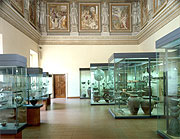
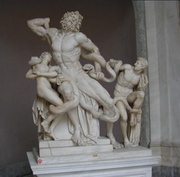
Gregory XVI (1831-1846) founded the Etruscan Museum (1837) with archaeological finds discovered during excavations carried out from 1828 onwards in southern Etruria. Later, he established the Egyptian Museum (1839), which houses ancient artifacts from explorations in Egypt, together with other pieces already conserved in the Vatican and in the Museo Capitolino, and the Lateran Profane Museum (1844), with statues, bas-relief sculptures and mosaics of the Roman era, which could not be adequately placed in the Vatican Palace. The Lateran Profane Museum was expanded in 1854 under Pius IX (1846-1878) with the addition of the Pio Christian Museum. This museum is comprised of ancient sculptures (especially sarcophagi) and inscriptions with ancient Christian content. In 1910, under the pontificate of Saint Pius X (1903-1914), the Hebrew Lapidary was established. This section of the museum contains 137 inscriptions from ancient Hebrew cemeteries in Rome mostly from via Portuense and donated by the Marquisate Pellegrini-Quarantotti. These last collections (Gregorian Profane Museum, Pio Christian Museum and the Hebrew Lapidary) were transferred, under the pontificate of Pope John XXIII (1958-1963), from the Lateran Palace to their present building within the Vatican and inaugurated in 1970.
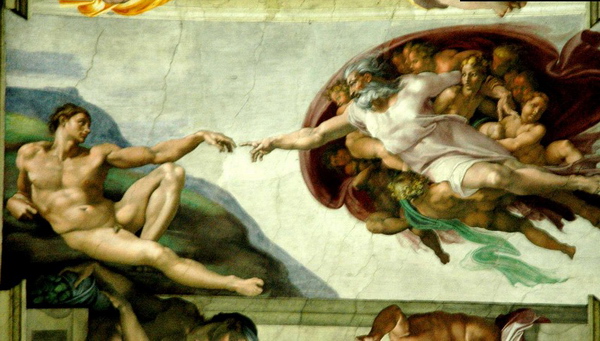
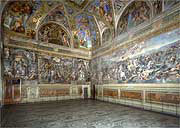
The Museums also include the Gallery of Tapestries, a collection of various 15th and 17th century tapestries; the Gallery of Maps, decorated under the pontificate of Gregory XIII (1572-1585) and restored by Urban VIII (1623-1644); the Sobieski Room and the Room of the Immaculate Conception; the Raphael Stanze and the Loggia, which were decorated by order of Julius II and Leo X (1513-1521); the Chapel of Nicholas V (1447-1455), painted by Fra Angelico; the Sistine Chapel, which takes the name of its founder, Pope Sixtus IV; the Borgia Apartment, where Pope Alexander VI lived until his death (1492-1503); the Vatican Pinacoteca, created under Pius XI (1922-1932) in a special building near the new entrance to the Museums; the Missionary-Ethnological Museum which was founded by Pius XI in 1926, arranged on the upper floors of the Lateran Palace and later transferred, under Pope John XXIII, to the Vatican where it has been opened again to the public in the same building which housed the former Lateran collections. In 1973 the Collection of Modern and Contemporary Religious Art was added and inaugurated by Pope Paul VI (1963-1978) in the Borgia Apartment. The Vatican Historical Museum, founded in 1973 and transferred in 1987 to the Papal Apartment in the Lateran Palace, houses a series of papal portraits along with objects of the past Pontifical Military Corps and of the Pontifical Chapel and Family and historic ceremonial objects no longer in use. The Carriage and Automobile Museum is a section of the Vatican Historical Museum. In the year 2000, the Vatican Museums opened a new large entrance that provides visitor information and other services; on display are many new artworks, two of which were specially created for this grand entrance hall.
The new entrance
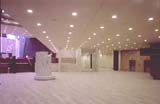
Since early 2000 the Vatican Museums welcome visitors in a spacious new entrance that offers various services (security check, the cloak-room, visitor information, itineraries and guided tours, currency exchange, museum shop, nursery and first aid station). The structure is composed of three floors - the third is reserved for special exhibitions and meetings. From the second floor a monumental ramp, with inclined axis, leads the visitor to the exhibition areas through the Cortile delle Corrazze, which is covered by a glass and metal structure.
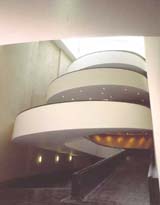
In his inaugural speech, Pope John Paul II defined the new structure as “the entrance that introduces that temple of art and culture which are the Vatican Museums”, which “represent at a cultural level one of the most important doors of the Holy See open on the world. From this space comes not only the functional but the symbolic value of heightened “capacity”, that is, more comfort to express the renewed will of the Church to seek dialogue with humanity, in the sign of art and culture, in accessing the heritage which history entrusted her”. Various artworks are displayed in the entrance. Among the ancient pieces is one particularly worth seeing: the large polychrome mosaic dating back to the 1st century A.D. Two works of contemporary art have been specially executed for the entrance : the marble sculpture by Giuliano Vangi entitled “Varcare la Soglia” and the bronze doors of the main entrance.